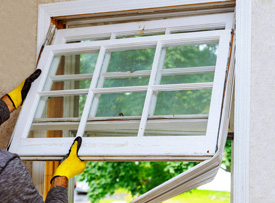Damage to Existing Property – Which Policy to Use?
January 7, 2021
Property that exists at the site prior to the commencement of a construction project, such as the building and personal property in the building, is referred to in the insurance world as “existing property.” If existing property is damaged by construction activities, the property owner will likely expect a contractor’s insurance to pay to repair or replace the property. But would it be beneficial to both parties if the property owner considered using their own insurance to pay?
Using Contractor’s General Liability
A contractor’s general liability insurance responds to claims for damage to existing property at a project site.
The general liability insurance company’s claim adjustment will include the following steps:
- Coverage investigation – are the damages the result of a peril not excluded under the insurance policy?
- Liability investigation – is the contractor legally liable for the damages?
- Damages investigation – what is the reasonable cost to repair or replace the damaged property? Was there loss other than the cost to repair or replace the damaged property (e.g. loss of rent or loss of business income)?
- Actual cash value investigation – actual cash value will be paid, so what is the difference between the replacement cost value and the actual cash value of the damaged property?
- Settlement negotiation with the property owner – what is the total amount of the loss?
- Execution of a release of all claims.
- Final payment to the property owner.
Notably, if legal liability is not clear or if the damages are significant, the general liability insurance company’s claim adjustment can take weeks, if not months, to complete. There is also the possibility that the insurer may deny liability and refuse to pay altogether.
Property Insurance as an Alternative
 There is an alternative that can provide more certainty and faster payment for the repair or replacement of the damaged property. The owner can use their own insurance, namely their property insurance. After the claim is resolved, the property insurance company can then subrogate (i.e. seek reimbursement) from the contractor that caused the damage. Successful subrogation would leave $0 on the owner’s loss history, leaving the next renewal pricing unaffected.
There is an alternative that can provide more certainty and faster payment for the repair or replacement of the damaged property. The owner can use their own insurance, namely their property insurance. After the claim is resolved, the property insurance company can then subrogate (i.e. seek reimbursement) from the contractor that caused the damage. Successful subrogation would leave $0 on the owner’s loss history, leaving the next renewal pricing unaffected.
The property insurance company’s claim adjustment will include the following steps:
- Coverage investigation – are the damages a result of a peril not excluded under the insurance policy?
- Initial damages investigation – what is a rough estimate of the cost to repair or replace the damaged property?
- Execution of a partial proof of loss.
- Partial payment(s) to the property owner.
- Final damages investigation – what is the final cost to repair or replace the damaged property? Usually, replacement cost value, and not actual cash value, will be included in the final cost.
- Settlement negotiation with the property owner – what is the total value of the claim?
- Execution of a final proof of loss.
- Final payment to the property owner.
- Subrogation against the party that caused the damage to the property.
The general liability insurance claim adjustment includes a potentially lengthy legal liability investigation and, if legal liability is accepted, only one payment will be made at the end of the process. The owner’s property insurance company, however, will not require a determination of legal liability in order to grant coverage, and payments can be made early, without delay, and throughout the claim adjustment process. This removes the uncertainty of who will pay and when, benefitting both the owner and contractor.
The views and opinions expressed within are those of the author(s) and do not necessarily reflect the official policy or position of Parker, Smith & Feek. While every effort has been taken in compiling this information to ensure that its contents are totally accurate, neither the publisher nor the author can accept liability for any inaccuracies or changed circumstances of any information herein or for the consequences of any reliance placed upon it.



